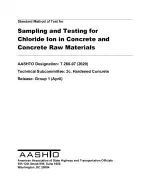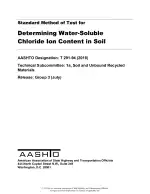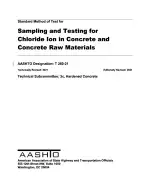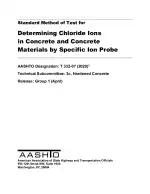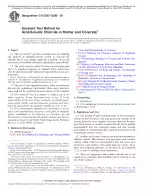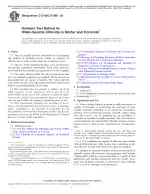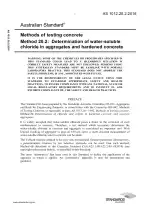AASHTO T 260-97 (2020) PDF Download
Standard EN SampleStandard Method of Test for Sampling and Testing for Chloride Ion in Concrete and Concrete Raw Materials
Also Known As:
AASHTO T 260-97 (2020) is a standard method of test that provides procedures for sampling and testing for chloride ion content in concrete and concrete raw materials. The standard specifies two methods for determining chloride ion content: acid-soluble chloride and water-soluble chloride.
The acid-soluble chloride method is used to determine the total amount of chloride in the sample, which is typically equal to the acid-soluble chloride. However, there may be organic additives or minerals in the concrete or raw materials that contain acid-insoluble chloride. These constituents can become acid soluble over time in the alkaline environment of concrete or mortar.
The water-soluble chloride method takes into account the effect of the age of the concrete, mortar, or hydrated portland cement at the time of sampling. The chloride ion content can vary depending on the age of the material, with early age samples having higher chloride ion content. To ensure accurate results, it is recommended that the material be well-cured and at least 28 days old before sampling, unless early age studies are specifically desired.
| Language(s) | English |
| File Size | 1013.8 KB |

